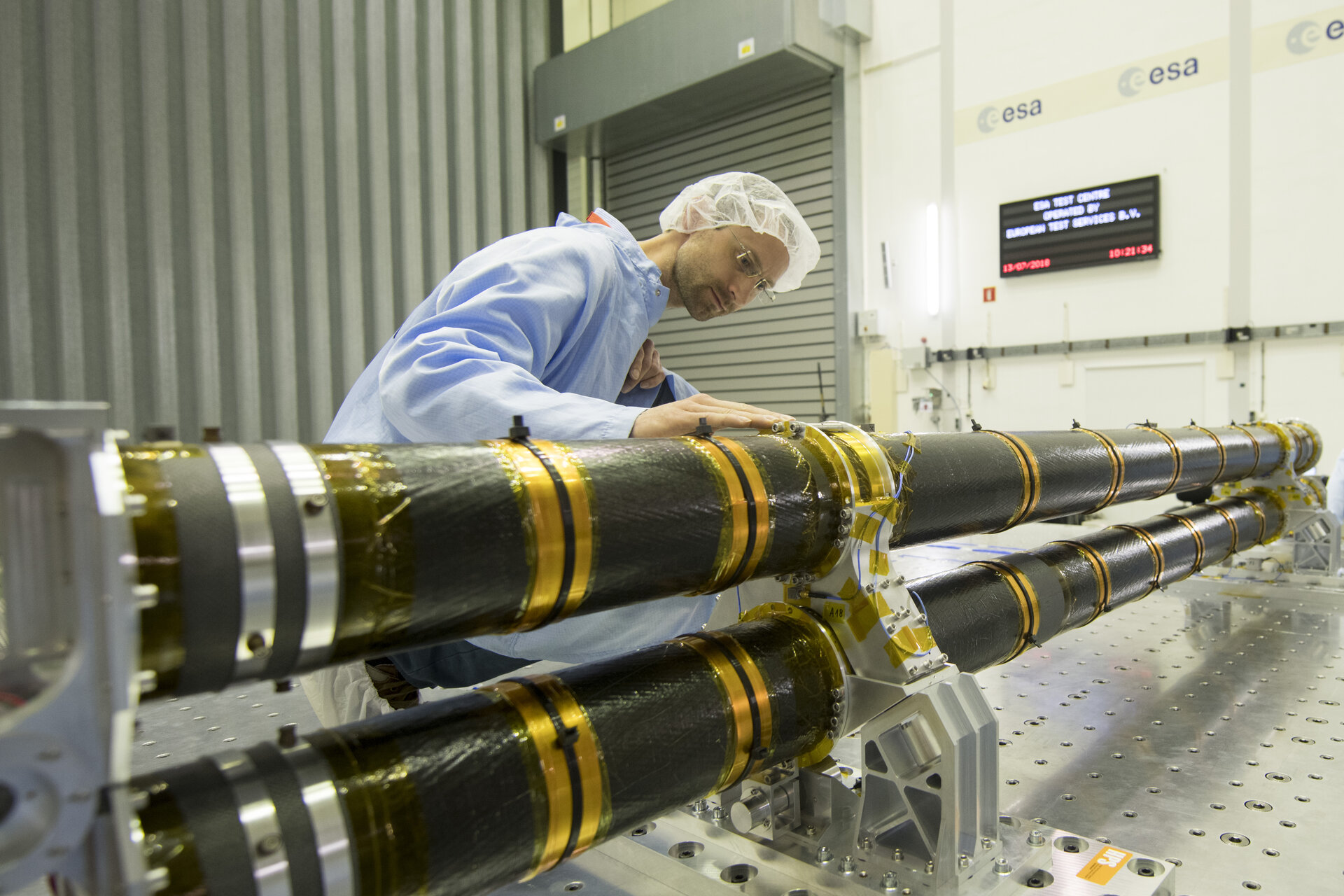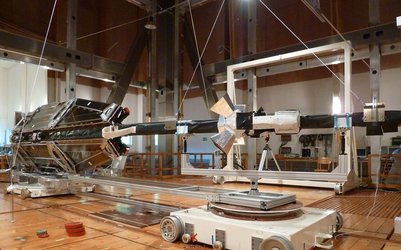Accept all cookies Accept only essential cookies See our Cookie Notice

About ESA
The European Space Agency (ESA) is Europe’s gateway to space. Its mission is to shape the development of Europe’s space capability and ensure that investment in space continues to deliver benefits to the citizens of Europe and the world.
Highlights
ESA - United space in Europe
This is ESA ESA facts Member States & Cooperating States Funding Director General Top management For Member State Delegations European vision European Space Policy ESA & EU Space Councils Responsibility & Sustainability Annual Report Calendar of meetings Corporate newsEstablishments & sites
ESA Headquarters ESA ESTEC ESA ESOC ESA ESRIN ESA EAC ESA ESAC Europe's Spaceport ESA ESEC ESA ECSAT Brussels Office Washington OfficeWorking with ESA
Business with ESA ESA Commercialisation Gateway Law at ESA Careers Cyber resilience at ESA IT at ESA Newsroom Partnerships Merchandising Licence Education Open Space Innovation Platform Integrity and Reporting Administrative Tribunal Health and SafetyMore about ESA
History ESA Historical Archives Exhibitions Publications Art & Culture ESA Merchandise Kids Diversity ESA Brand Centre ESA ChampionsLatest
Space in Member States
Find out more about space activities in our 23 Member States, and understand how ESA works together with their national agencies, institutions and organisations.
Science & Exploration
Exploring our Solar System and unlocking the secrets of the Universe
Go to topicAstronauts
Missions
Juice Euclid Webb Solar Orbiter BepiColombo Gaia ExoMars Cheops Exoplanet missions More missionsActivities
International Space Station Orion service module Gateway Concordia Caves & Pangaea BenefitsLatest
Space Safety
Protecting life and infrastructure on Earth and in orbit
Go to topicAsteroids
Asteroids and Planetary Defence Asteroid danger explained Flyeye telescope: asteroid detection Hera mission: asteroid deflection Near-Earth Object Coordination CentreSpace junk
About space debris Space debris by the numbers Space Environment Report In space refuelling, refurbishing and removingSafety from space
Clean Space ecodesign Zero Debris Technologies Space for Earth Supporting Sustainable DevelopmentApplications
Using space to benefit citizens and meet future challenges on Earth
Go to topicObserving the Earth
Observing the Earth Future EO Copernicus Meteorology Space for our climate Satellite missionsCommercialisation
ESA Commercialisation Gateway Open Space Innovation Platform Business Incubation ESA Space SolutionsEnabling & Support
Making space accessible and developing the technologies for the future
Go to topicBuilding missions
Space Engineering and Technology Test centre Laboratories Concurrent Design Facility Preparing for the future Shaping the Future Discovery and Preparation Advanced Concepts TeamSpace transportation
Space Transportation Ariane Vega Space Rider Future space transportation Boost! Europe's Spaceport Launches from Europe's Spaceport from 2012Latest

Shaker testing of an articulated deployable boom demonstrator
Thank you for liking
You have already liked this page, you can only like it once!
Shaker testing of a new, European-made articulated boom for satellites, taking place at ESA’s ESTEC technical centre in the Netherlands. This 6.1-m long boom would unfold in orbit to support large deployable antenna reflectors, radiometers, or other heavy instruments extended from the main body of a satellite.
HPS GmbH in Germany led its development for ESA, supported through the Agency’s Technology Research Programme.
“This boom demonstrator model is the latest output of ESA’s larger effort to develop ultra-stable deployable structures for space applications, enhancing European competencies and non-dependence,” explains ESA structural engineer Alexander Ihle.
“Right now, to serve missions employing large deployable antenna reflectors and booms such as ESA’s Alphasat and Biomass, we need to procure technology from outside Europe. Instead, we aim to foster a native European capability as an enabler of future missions.”
Stephan Endler of HPS GmbH adds: “Benchmarked against comparable designs available outside Europe, this boom combines a lower mass with higher stiffness and improved thermoelastic stability, so we are outperforming our competitors.”
Woven from carbon fiber composite into a rigid tube by INVENT GmbH and incorporating dedicated motorised hinges developed by HPS’ subcontractor RUAG Space Germany, the boom design is scalable in nature, potentially extendible up to 12 m in length.
As a key design requirement, it must maintain its shape from base to tip down to sub-millimetre scale, unaffected by the wide range of temperatures encountered in orbital space.
Testing of the boom began in the DLR German Aerospace Center’s facility in Bremen, with an initial partial deployment subsequently repeated in vacuum conditions – progressing to the vibration and shock testing as seen above, using ESTEC’s vibration test facility.
The boom has gone on to Portugal for full-scale deployment, stiffness and thermal stability testing at HPS’ partner company INEGI, also responsible for the project's deployment ground support equipment.
As a next step the plan is to test the boom in conjunction with a full-scale large deployable antenna reflector to bring the technology closer to the point where it could be adopted by a future space mission.
-
CREDIT
ESA–G. Porter -
LICENCE
ESA Standard Licence

Partial deployment test of an articulated boom for s…

CIMR antenna boom during deployment testing

Swarm with deployed boom

Juice’s magnetometer boom extended















 Germany
Germany
 Austria
Austria
 Belgium
Belgium
 Denmark
Denmark
 Spain
Spain
 Estonia
Estonia
 Finland
Finland
 France
France
 Greece
Greece
 Hungary
Hungary
 Ireland
Ireland
 Italy
Italy
 Luxembourg
Luxembourg
 Norway
Norway
 The Netherlands
The Netherlands
 Poland
Poland
 Portugal
Portugal
 Czechia
Czechia
 Romania
Romania
 United Kingdom
United Kingdom
 Slovenia
Slovenia
 Sweden
Sweden
 Switzerland
Switzerland

























